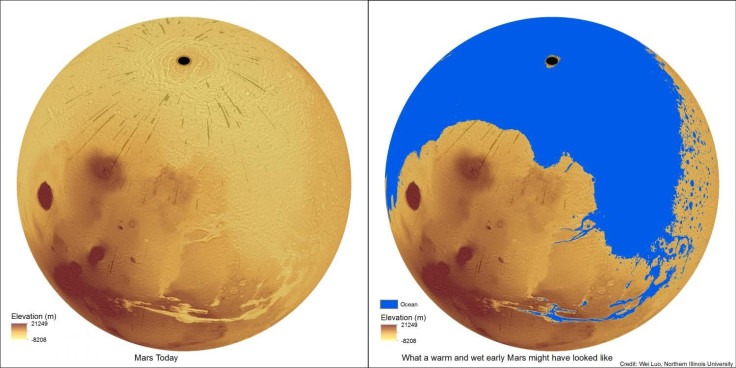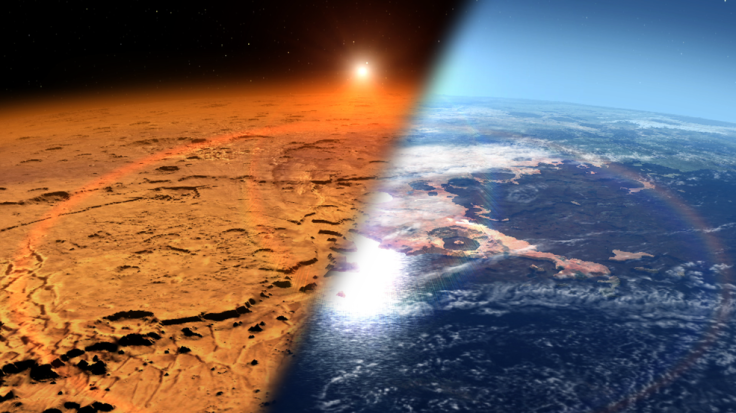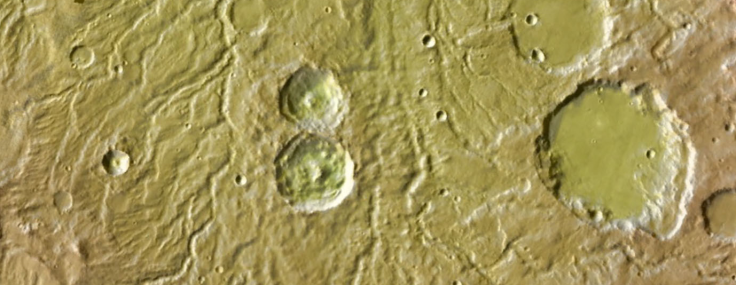Water On Mars: Here’s How Much Flowed In Ancient Ocean, Rivers On Planet
Mars may have once had 10 times as much water as scientists have previously estimated, according to a geography professor who calculated the amount of water needed to erode the planet’s surface into the patterns we see today.
That professor and other researchers analyzed the dried-up channels in the Martian surface that once held flowing rivers, determining how much water would have been needed to erode those channels, known as valleys, and the final volume of each. The large amount of water they have estimated to have flowed on the surface would have been enough to support an ocean, even on the conservative end of their measurements.

“Our result is consistent with a warm and wet early Mars climate and the existence of an ancient northern ocean,” their study in the journal Nature Communications says. “The water running through the [valley networks] would eventually flow toward and collect at the topographically low northern plains, forming an ocean covering nearly [a third] of the surface.”
Mars dried up as its entire climate changed over many millions of years. Scientists estimate the planet once had triple the atmosphere it has today, and losing so much air and so much of its protective barrier to space contributed to Mars going from a warm and wet planet to a dry and cold one.
Read: Rainfall on Titan Is More Like Mars than Earth
But before it was a barren, red globe almost devoid of atmosphere, Earth’s planetary neighbor had enough water to make it rain — heavily. We can see the marks rainfall has left behind, because at one point there was enough precipitation to saturate the Martian surface and create stormwater runoff that flowed in rivers, carving out those valleys in the ground and eroding craters. Researchers have said when Mars was a baby, its atmosphere was too thick for any precipitation heavier than fog, but as the atmosphere got thinner and thinner, the rain got harder and harder. That rain, however, has long since ceased.


The study says in addition to contributing to the debate on whether an ancient ocean existed on Mars, knowing just how much Martian water there used to be is crucial to understanding the planet’s climate and how the water moved on its surface. The large amount of water these researchers calculated suggests water would have had to recycle quite a bit on Mars, requiring a “large open water body” the size of an ocean.
Recycling water on a planet’s surface would involve water evaporating from that ocean and then raining down. In the case of Mars, this would have happened many times over to erode such valleys into its surface, the study says.
Read: A Human Colony on Mars Would Evolve Into a New Race
“I would imagine early Mars as being similar to what we have on Earth — with an ocean, lakes, running rivers and rainfall,” Northern Illinois University geography professor Wei Luo said in a statement.
The next step is better understanding what sort of climate on ancient Mars would have hosted such a wet planet, one that would have been warm enough to promote the recycling of the water.
“There’s still a lot to work out in trying to reconcile the evidence for more water,” Luo said.
© Copyright IBTimes 2024. All rights reserved.











